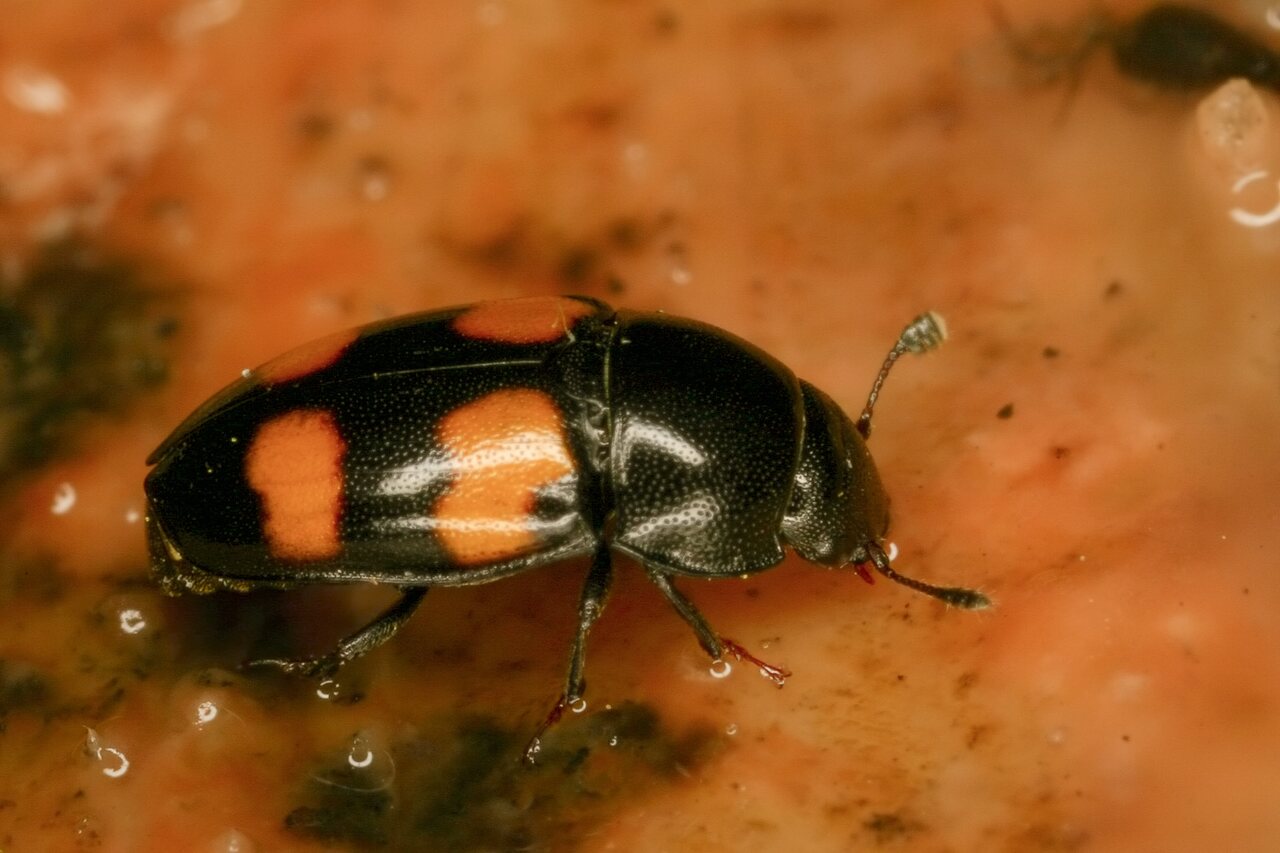
Glischrochilus hortensis · daržinis žvilgiavabalis
- Librodor hortensis
- Gartenglanzkäfer
- Kuperamäihiäinen
- daržinis žvilgiavabalis
- urazek leśny
It is widespread European and Asian species. Glischrochilus hortensis is saproxylic, living beneath dead or damaged bark on a range of deciduous and coniferous trees, both as larvae and adults, where they are facultative and obligate predators of other insects and their larvae. They fly strongly, are quick to colonize new areas, and may quickly appear in large numbers as they are attracted to pheromones used by bark beetles. Adults also feed on exuding sap from injured trees, decaying vegetation and fungi but they are strongly attracted to fermenting products of all kinds e.g. alcoholic products, vinegar and fruit juices which has earned them the common names of picnic beetles or beer bugs.
In general the eggs are elongate and white and laid among suitable decaying plant material or under bark etc. in the spring. Larvae develop rapidly, usually taking about a month from hatching to pupation. New generation adults appear in the spring and there is a single generation each year.
‥